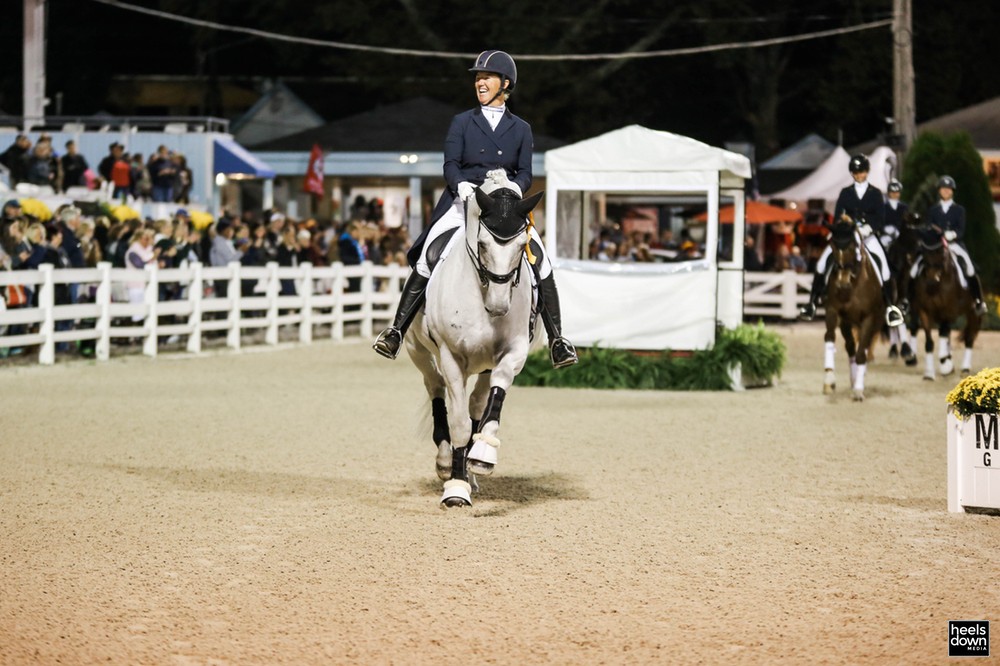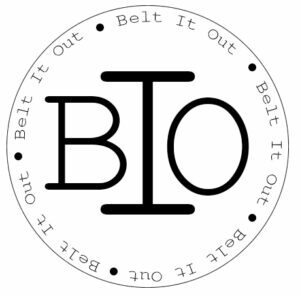Demystifying the Half-Halt With Jacquie Brooks

The dreaded half-halt – it’s a common aid used in any discipline. But understanding the timing, the pressure, and the proper release is truly an art.
Heels Down Mag spoke with Canadian two-time Olympic dressage rider, Jacquie Brooks, on how to master the half-halt.
“The problem with the word ‘half-halt’ is that it is seemingly simple, but actually quite complicated,” said Jacquie, who regularly coaches both eventers and dressage riders. “The real meaning of the word is to find your sport balance.”
Sport Balance
What does ‘sport balance’ mean exactly, in dressage? Jacquie used gymnastics as an example.
“Think about a gymnast on the balance beam,” she said. “They have to distribute their weight evenly in order to balance on the beam. Now think of the dressage horse when you ask for a halt. Ideally, the horse should be perfectly square, round through his back, and his weight should be evenly distributed over his legs. That’s balanced.”
So now, think about the horse when he’s moving. A half-halt is designed to help when a horse is losing or has lost its balance. It is a moment in time where the rider asks the horse to return to light, self-carriage.
“With any sport, skiing, gymnastics, whatever… when you lose your balance you know when you reach the point of no return and you have to stop. You halt,” she said. “But if you can recover, you might wobble, but then you recover your balance, and you then you keep going. That’s the half-halt.”

Like Driving A Car
“A half-halt is used when a horse loses its balance, like if it has fallen on its forehand. If you cannot rebalance the horse in motion, the goal would be to halt fully. A half-halt is used to rebalance while still on the move,” Jacquie explained.
To picture this, Jacquie says think about taking a turn while driving a car. Naturally, we slow the car down as we approach the turn.
“You stop the car if you know you won’t make the turn,” she said. “But generally speaking, you don’t speed up going into the turn. It’s the same process when you’re trying to re-establish balance.”
That’s where the half-halt comes in.
Comes Down To Training
Jacquie breaks down the components of the half-halt into two important training categories. The first comes back to sport – proper balance takes training. The second is to respect the horse as an animal.
“When we train a dog, we teach them to sit, stay and come. We physically might help the dog to sit at first as they are learning. But soon they intellectually understand these three basic commands. Horses understanding the commands to halt, stand require the same basic training. It’s really not that different between horses and other animals,” Jacquie described.
“We teach the horses that if no aids are on, they should stay in that gait. With resistance aids, they should slow. With driving aids, they go forward,” she said. “The horse has to respect each of these common aids in order to establish balance.”
Where training some times goes wrong is when riders put a heavy bit in a horse’s mouth, and the resistance aid is trained in a way that puts the horse more onto the forehand, and therefore they do not halt in balance.
Once these three main aids are taught, the horse can then incorporate bending and turning.
“Balance is the most important thing,” Jacquie explained. “Just take it at face value – it’s halfway to the halt, find the balance, and then keep going.”


